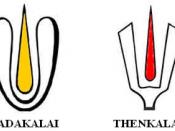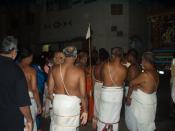The Laws of Manu
The Laws of Manu have drawn the attention of Western minds to Hindu ideals and how those principles influenced the day-to-day life of the four different classes within Hindu society. The rules and regulations that are contained in the law are considered to be universal to all and everlasting. The laws of Manu were a collection of writings that were legal and ethical in nature, dealing with the following problems. Beginning with the function of the four castes, supremacy of the priestly caste, perpetuation of the priestly caste, conduct of men in the secular life, and conduct of men in the religious life. The document about to be presented deals with caste system and gender roles.
The laws of Manu were believed to be written between the first century B.C.E. and third century B.C.E. The Laws of Manu is one of the best known of the Sanskrit texts that was compiled from diverse ancient sources and provided detailed rules, presumably directed to Brahman priests, governing ritual and daily life.
In particular they seek to validate and preserve the high caste position of the Brahmans. Brahma created Manu, the first man. From Manu came the four different types of people, as the creator Brahma determined. From Manu's head came the Brahmins, the best and most holy people. Out of Manu's hands came the Kshatriyas, the rulers and warriors. The craftsmen came from his thighs and are called Vaisyas. The remainder of the people came from Manu's feet and are known as Sudras. The caste system became more complicated as time went on, with literally thousands of sub castes coming into existence. Today the caste system is still an integral part of the social order of India, even though the Indian government has outlawed it.
To begin,



Great essay
this essay is great, it reflects everything in India society in first or second B.C.E
0 out of 0 people found this comment useful.